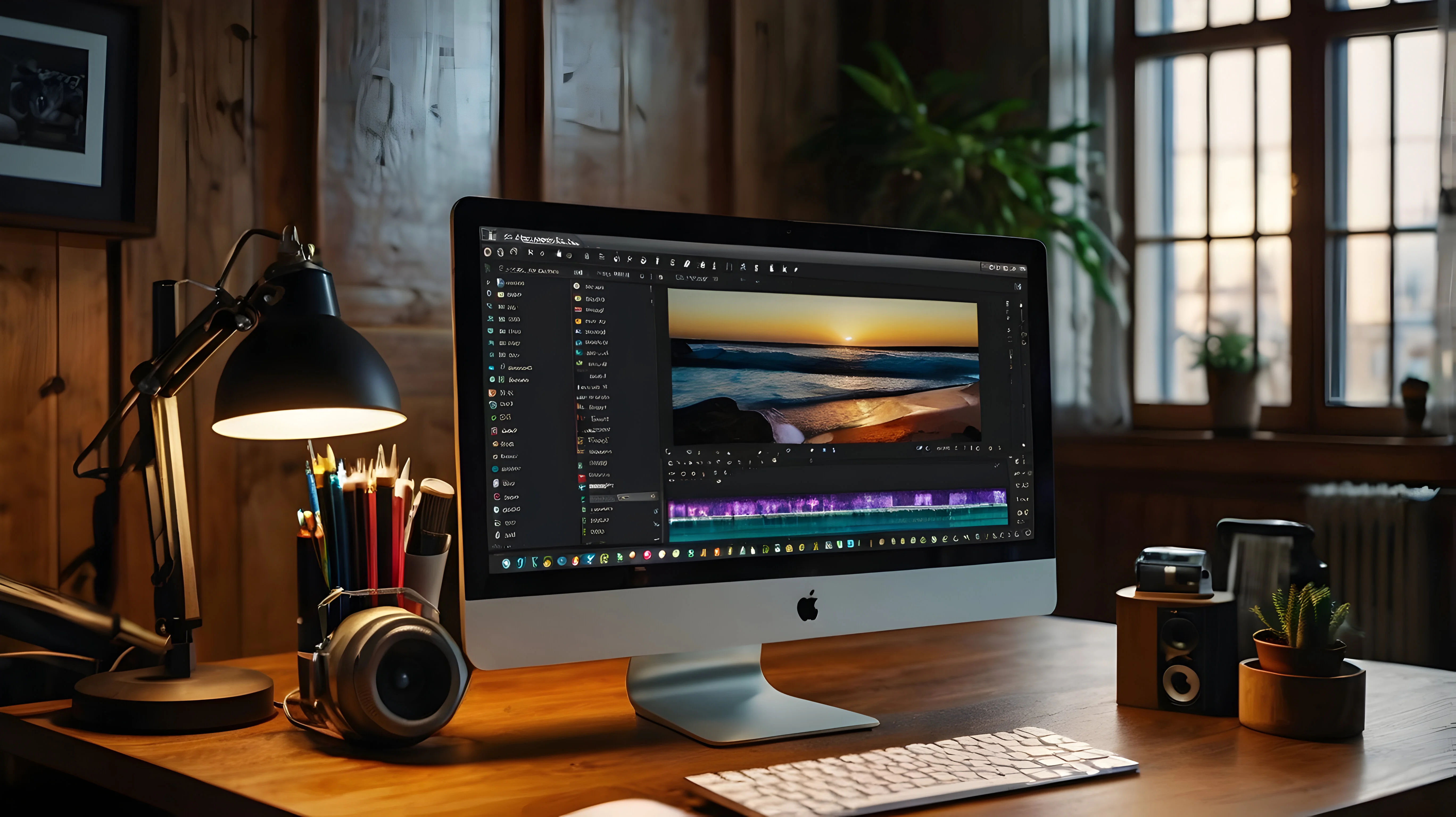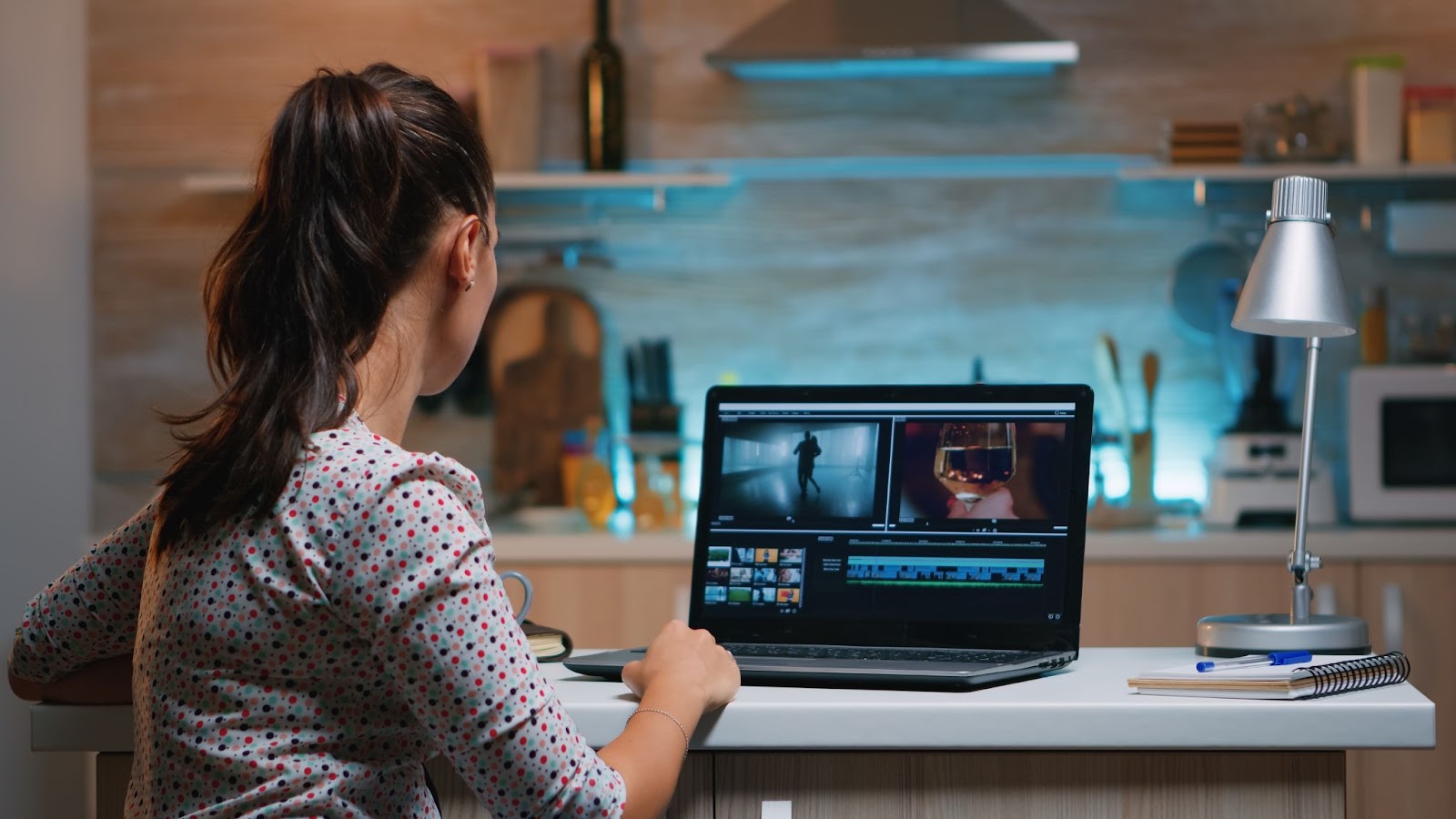How to Create and Edit Captions in DaVinci Resolve


How to Create and Edit Captions in DaVinci Resolve
Adding captions to your videos in DaVinci Resolve can significantly enhance accessibility, improve viewer engagement, and make your content more discoverable.
AI video captioning has revolutionized this process, making it faster and more accurate than ever before. Whether adding captions manually or importing subtitle files, DaVinci Resolve offers tools to help streamline the process.
This comprehensive guide will walk you through the steps for creating and editing captions in DaVinci Resolve, along with tips to optimize your workflow and how Gling.ai can enhance your captioning process.

Why Add Captions to Your Videos?
- Accessibility: They make your content accessible to viewers who are Deaf or hard of hearing.
- Engagement: Captions can increase viewer engagement by providing text that complements the audio.
- SEO: Properly captioned videos are easier for search engines to index, which can help your content reach a broader audience. This is one of the main reasons why everyone is using subtitles in their video content nowadays.
How to Add Captions in DaVinci Resolve
Manually
- Create a Subtitle Track:
- Open DaVinci Resolve and navigate to the Edit page.
- Right-click above the video track in your timeline and select Add Subtitle Track. This will create a dedicated track for your subtitles.
- Add Subtitles:
- Move the playhead to where you want the subtitle to appear.
- Right-click on the subtitle track and select Add Subtitle. This creates a subtitle entry at the current playhead position.
- In the Inspector panel, enter your subtitle text. Customize its font, size, color, and position as needed.
- Adjust Timing:
- Drag the edges of the subtitle box to adjust its duration to match the audio.
- Preview the video to ensure the subtitles synchronize with the spoken content.
- Style and Format:
- Use the Inspector panel to change your subtitles' font, color, and style. This will ensure that they are readable and aesthetically pleasing.
Using Subtitle Files (SRT)
- Import SRT File:
- Go to the Media page, right-click in the media pool area, and select Import Media.
- Choose your SRT file from your computer.
- Add SRT to Timeline:
- Drag the imported SRT file from the media pool to the subtitle track. The subtitles will be placed according to the specified time codes.
- Customize Appearance:
- Select the subtitle track and use the Inspector panel to adjust the font, size, and color to match your video’s style.
Automatic Subtitle Generation

While DaVinci Resolve is a powerful video editing tool, it does not natively support automatic subtitle generation. One such tool is Gling.ai, which offers advanced AI-powered capabilities for creating accurate subtitles efficiently.
How Gling.ai Enhances Automatic Subtitle Generation
- Advanced AI Technology
- High Accuracy
- Fast Turnaround
- Seamless Integration
- User-Friendly Interface
- Customizable Output
Integrating Gling.ai with DaVinci Resolve
- Upload Your Video: Upload your video to Gling.ai’s platform. The AI will begin processing the audio to generate the subtitles.
- Review and Edit: Once the initial subtitles are generated, you can review and make the necessary adjustments. Gling.ai provides tools to correct inaccuracies and ensure the text matches the audio.
- Download Subtitles in a compatible format like SRT or VTT.
- Import into DaVinci Resolve: Open DaVinci Resolve and import the subtitle file into your project.
- Adjust and Style: Use DaVinci Resolve’s tools to adjust the subtitles' appearance to match your video’s style.

Subtitling 101
- Batch Processing: Use transcription tools' batch processing features to handle multiple. This can save time and maintain consistency across your projects.
- Proofreading: Always review your subtitles for accuracy.
- Consistency: Ensure your subtitle formatting is consistent throughout your video.
- Timecode Accuracy: Ensure that your subtitles' start and end times match the audio precisely.
- Use Templates: If you frequently add captions, consider creating and saving subtitle templates in DaVinci Resolve.
- Language and Readability: Pay attention to language clarity and readability.
Troubleshooting Common Issues
- Subtitles Not Syncing Correctly:some text
- Solution: Check the timing of your subtitles in the timeline and adjust as needed. Ensure that each subtitle's start and end times align with the corresponding audio.
- Subtitles Not Displaying:some text
- Solution: Verify that the subtitle track is enabled and visible in the timeline. Also, check the format of your subtitle file to ensure it’s compatible with DaVinci Resolve.
- Incorrect Font or Style:some text
- Solution: Use the Inspector panel to adjust your subtitles' font, size, and color. Make sure you apply changes consistently across all subtitle entries.
- Subtitle File Issues:some text
- Solution: If importing an SRT file causes errors, verify that the file is correctly formatted. Before importing, use a subtitle editor to check for any issues with the file.
- Performance Lag:some text
- Solution: Ensure your computer meets DaVinci Resolve’s system requirements for smoother performance. Close unnecessary applications and manage your project settings to optimize performance.
When facing issues with audio quality, consider using AI tools for video editing that can help enhance your video's sound. These tools can often remove background noise from video online, improving the overall quality of your content.
Enhance Your Workflow with Gling.ai
For a streamlined and efficient captioning experience, Gling.ai offers advanced AI-powered tools that can greatly enhance your workflow. Here’s how Gling.ai can help:
- Efficient Caption Generation: Gling.ai uses sophisticated AI algorithms to generate accurate captions for your videos automatically. This reduces the time and effort required for manual captioning and ensures high accuracy.
- Seamless Integration: Once Gling.ai generates captions, you can easily download them in various formats, such as SRT or VTT. These files are compatible with DaVinci Resolve, allowing you to import and edit them directly in your project.
- Enhanced Accuracy: Gling.ai’s advanced AI ensures that your captions are contextually accurate, capturing the nuances of dialogue and ensuring a more professional result.
- Improved Efficiency: By automating the captioning process, Gling.ai allows you to focus on the creative aspects of video editing, improving overall workflow efficiency.
- Cost-Effective Solutions: Gling.ai offers flexible pricing options to suit different budgets, making it a practical choice for individual creators and larger production teams.
Conclusion
Adding captions in DaVinci Resolve effectively makes your videos more accessible, engaging, and SEO-friendly. Whether you’re manually adding captions, importing SRT files, or using AI-powered tools, DaVinci Resolve provides flexible options to meet your needs.
For an optimized captioning experience, consider integrating Gling.ai into your workflow.
With its advanced AI capabilities and seamless integration with DaVinci Resolve, Gling.ai ensures that your captions are accurate and professionally presented, helping you to create captivating and accessible content that resonates with a diverse audience.








